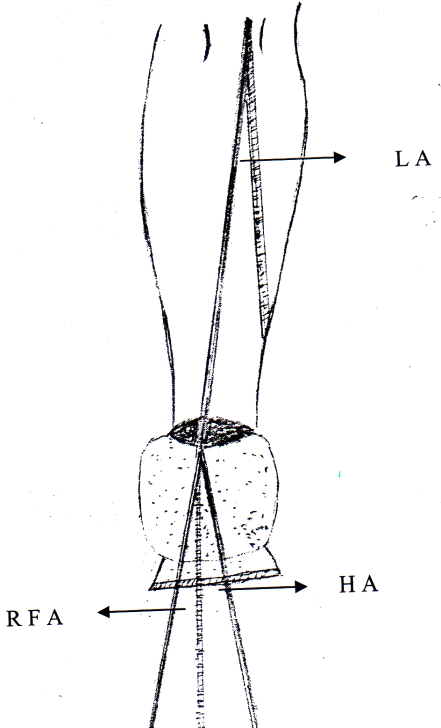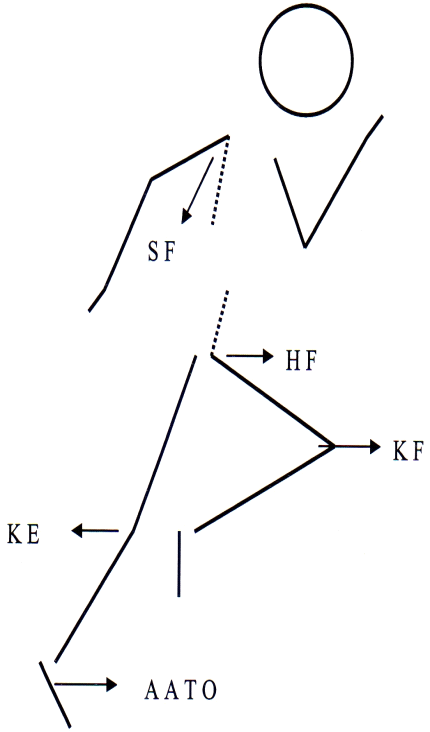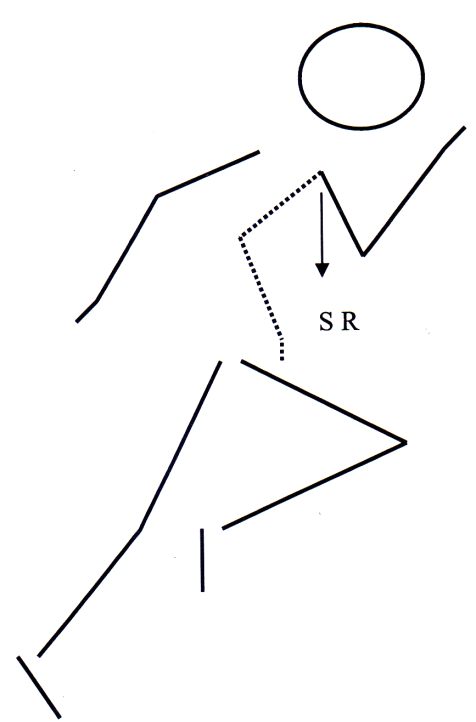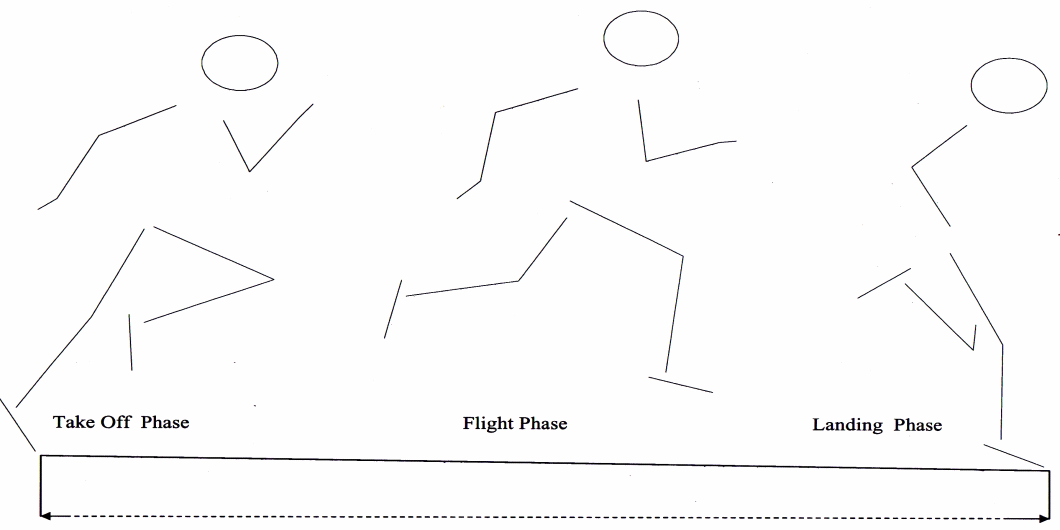Hussain I., Ansari N. W.
Department of physical Health & Sports Education, Aligarh Muslim University, Aligarh, (U. P.) India
Correspondence to: Ansari N. W., Department of physical Health & Sports Education, Aligarh Muslim University, Aligarh, (U. P.) India.
| Email: |  |
Copyright © 2012 Scientific & Academic Publishing. All Rights Reserved.
Abstract
Running is popular for the fitness and competitive sports. But it requires the correct body technique for get success in both areas. Athletes from different sports must understand the importance of their movement to enhance their performance. The 5000m race is a premier event in the sport of track event that demands technique. Good running technique will lead to improvements in 5000m race because basic action of 5000m race runner is of considerable importance for competitive athletes. Biomechanists are continuously engaged in sports, committed to improve athletes running mechanics, not only to perform at higher intensity but also for overall running mechanics. However, very little studies on kinematics analysis have been done on 5000m race. Thus this study has been designed to examine importance of 5000m race track runner’s kinematics. To develop foundational base of running mechanics for 5000m race runner training. A sample of twenty seven male All India Intervarsity players with age, weight and height ranged 18-25yrs, 49-75kg and 156-185cm were selected. The data were generated by capturing the videos during competition with two Synchronized Panasonic F15 S-VHS video camera. Coral-5&9, Link MPEG Player, SthSDVD, Photo Studio, SPSS and office Excel software were used to analyze the recorded data. ANOVA was used to analysis the data, and the result of the statistical analysis for kinematics variables: knee extension and flexion, hip extension and flexion, shoulder rotation and extension, ankle angel a landing and take- off and heel angle at take-off have shown significant influence on running style.
Keywords:
Kinematics Analysis, Athletic, 5000m race
Cite this paper: Hussain I., Ansari N. W., Influence of Kinematics Variables on Distance Running during Competition, International Journal of Sports Science, Vol. 3 No. 3, 2013, pp. 63-67. doi: 10.5923/j.sports.20130303.01.
1. Introduction
Running is a cyclic behavior in which the legs swing fore and aft and provide support for the body in alteration as in[1]. It is not only an athletic event but is also important part of other sports. At least four and a half million years ago, human running evolved when our early ancestor ape-like Australopithecus was used jog-trot action for hunting animals. Since that time, no major anatomical changes have occurred in the running apparatus.Running performs in the form of sprint, middle distance and long distance races in sport of track and field. In these events athletes compete against time. The authors have selected long distance event (i.e. 5000m) in this study because it represent important categories in the sport of track events in athletics. Endurance counts in long distance races. Those athletes, who learn this art, get success in long distance races. In contrast, no such relationship exists for running speed and energy cost. Oxygen cost changes little over a wide range of chosen running speeds. From a cardiovascular model of exercise, it is widely accepted that endurance performance is influenced by aerobic power (VO2max), lactate threshold, and running economy[2]. Economy of movement is obviously maintained by mechanisms that remain elusive, but they undoubtedly include choices of stride length: cadence[3], and sources of mechanical power output[4]. Thus there is a relationship between energy expenditure and runner’s running style in long distance race. Running style is important to minimize energy expenditure.Sport scientists and coaches, along with most of the athletic federations in the world have recognized the importance for scientific support in the improvement of athlete’s performance. A greater understanding of biomechanics of sport movement is important for better training techniques, advances in psychological support, and improvements in coaching education[5].To justify a movement as an economic one, it is very essential to analyse the movement first. Some time, it is very difficult for a human eye to analyse all the movements of various body segments and joints at the same time, so various instruments like still camera, video camera etc. are used to analyse various movements.Analysis of proper running style is relatively a new area of interest in sports biomechanics. One area of major concentration over the past few years is that of biomechanical analysis. The biomechanical analysis of 5000m event can help to understand the critical points of the technical performance, thus helping coaches and athletes in their preparation. The role of biomechanical analysis in biomechanical research involves form of recording motion to a sophisticated means of computer analysis of better efficiency. Over the years, new techniques in filming and timing have been perfected to aid the research in achieving accurate time measurements of both simple and complex locomotion patterns[6].Many authors have studied on the biomechanics of long distance running techniques. The biomechanics of lower extremity action was examine in distance running[7], ground reaction force was studied in distance running[8], rearfoot motion in distance running was studied[9], upper extremity function in distance running[10], sagittal plane kinematics of the lower extremity during distance running[11], changes in vertical ground reaction force during endurance running to exhaustion on a treadmill[12] and examine the ground reaction forces and kinematics in distance running in older- aged men[13]. The above researches based on human running motion have been done in provisional laboratories with given instruction to the selected subjects. To understand long distance runner’s movements with objective and analytical approach, the authors have tried to determine the Kinematical analysis of long distance runner’s running style in competition situation. The aim of this study is to explain the most important biomechanical parameters generating an efficient performance of the athletes during competitive situation. The study will be very useful to the coaches, researches and for distance runners as it would help improves their running form, increase in running performance, avoid injuries during competition and become a more economical manner. It was also hoped that our findings would provide new information for technique training of long distance runners.The changes in climatic conditions (i.e. air, temperature, atmospheric pressure and relative humidity etc), instruments errors (consistent calibration has been attempted), accuracy of the sophisticated softwares ability to digitise the kinematic data, competition pressure on athletes and injuries of athletes during competition, factors like daily routine, life style and food habits were the limitations of the study.
2. Methods
2.1. Participates
Twenty seven male athletes of 5000m race from All India Inter-varsity Athletic meet held at Tata Jamshedpur (Madhya Paradesh) India were investigated for the study. The age, weight and height ranged 18-25yrs (mean 21.58; SD 2.64), 49-75kg (mean 60.98, SD 6.24) and 156-185cm (mean 171.66; SD 6.26). The meet was conducted on the synthetic track. In order to maintain homogeneity, only left-foot of the runners was selected for the study. All subjects wore competitive sports kit as per completion rules of All India University.
2.2. Kinematic Variables
Stride Length(SL), Shoulder Flexion (SF) Shoulder Extension(SE), Shoulder Rotation(SR), Knee Flexion(KF), Knee Extension(KE) ,Knee Angle at Landing(KAL), Hip Flexion(HF), Hip Extension(HE), Ankle Angle at Take-Off (AATO),Ankle Angle Landing(AAL),Rear Foot Angle (RFA) and Leg Angle at Take Off (LATO) & Leg Angle at Landing(LAL),Heel Angle at Take-Off(HATO), Heel Angle at Landing(HAL) and Step Width (SW).
2.3. Data Collection
Data collection was performed using two Panasonic F15 S-VHS video cameras at 60Hz with a shutter speed of 1/1000s, zoom focus at 7X as per the film adjustment and sampling rates were 50 fields per second (25 frames per second). The first camera was placed 45mts from starting line of 100m and 18m from the first lane of track on field. Second camera was placed 5m behind the starting line of 100m. The video views were chosen based upon positioning of athletes. Athlete’s videograph were digitized throughout a range once their entire body was completely in the field of view. During the film analyses specific video fields were selected. The ground contact by heel of the running foot and take-off were selected as the beginning and ending of the running sequence respectively. The sequence of the running motion was divided into take -off and landing phase.
2.4. Software Used
SthSDVD, Photo Studio, Coral-5, Coral–9, Link MPEG Player and SPSS Software and office Excel software ware used to analyze the recorded data.
2.5. Data Analysis
 | Figure 1. The rear foot motion |
After video recording, the capture profile of each subject was played with the help of SthSDVD, while selecting required subjects slides. Then the chosen subjects’ slides were pasted into new frame of Photo Studio with the dimension of 351x288 pixel, width 4.458cm, height 3.658cm and resolution 200 dpi. | Figure 2. The take off phase |
 | Figure 3. The shoulder rotation |
 | Figure 4. The landing phase |
 | Figure 5. The stride width |
The various joint axes were marked on the selected slide as a reference point associated with each segment through Photo Studio in different colours. Colours were chosen separately for each subject to avoid the identification hindrances among the data of subjects. Further the stick figures (Elgon) of each phase (figures 1 to 6) were constructed by the joint-point method for each subject with the help of Coral-9 software.  | Figure 6. The stride length |
2.6. Statistical Analysis
One way ANOVA was used to determine the differences between the selected variables and the joint effect of stride length and width on runner’s performance. Further critical difference (C.D.) was used to determine the level of significance among all variables of runner’s running style. Statistical was set at 5% level of significant.
3. Result
| Table 1. Descriptive statistics for 5000m race from ANOVA single factor |
| | Source of Variation | SS | df | MS | F | | Between Groups | 1305289 | 14 | 93234.92 | 1220.25 | | Within Groups | 30944.58 | 405 | 76.41 | | | Total | 1336233 | 419 | | |
|
|
Table 1.the calculated value of F=1220.25 revealed that selected kinematic variable on running style is highly significant at 95% level of confidence. Thus critical difference (C.D) =4.50 was calculated to find out the level of significance among selected kinematic variable of 5000m race runner running style.Table 2 reveals that KE, KF, HE, HF, SR, SE, AAL, AATO, and HATO play significant role in endurance running whereas KAL, SF, HAL, LAL, LATO and RFA have not significant effect in 5000m race.●Predictors: (Constant), Stride Length●Dependent Variable: TimeTable 3 result revealed that calculated F (0.41) is less than tabulated value (0.67) indicated that P>0.05, hence, the joint effect of stride length and stride width does not play a significant role in 5000m race. Table 2. Critical differences of selected kinematics variables of 5000m runners
 |
| |
|
Table 3. The statistical analysis F-test for Joint effect of stride length and width on 5000m race
 |
| |
|
4. Discussion
The results (table 2) of the present study suggest that endurance runners differ in running kinematics from their Inter universities level counterparts in competitive condition. The actions of knee and ankle joints compensates for the flexion-extension motion of the hip. At extreme flexion of the hip (at heel-strike and toe-off) the knee is extended, while during knee flexion and ankle dorsiflexion help to reduce the effective height of the body.[14] reported that in the running, the knee is flexed so that the heel is near the thigh; this means a shortened lever arm, which permits greater speed.In endurance running, the forward lean should be from the ankles so that the trunk is kept almost in line with driving leg. This forward angle reduces the pressure against the body and puts the center of gravity more ahead of the driving foot enlarging the forward component of the propulsive force. Also, the forward angle combined with additional bending of the supporting knee as the body passes over it, reduces the up and down bobbing of the body which would occur with the greater propulsive force if the angle of the body is more upright. Ankle is a better energy generator following a forefoot landing than following a heel strike landing. In endurance running, the body weight should be smoothly transmitted from one foot to the other-gliding action, In this style of running, foot thrust should be more or less eliminated. To maintain the steady forward glide of the efficient endurance runner, arm movements must take place in the shoulder joints[15]. In case shoulder rotation remains in its increased state, then other alteration could be made to change to movements of the lower leg[16]. The athlete’s stride length and stride frequency were reduced; too are the range and vigor of the most of his actions[17]. The stride length was sufficient to compensate the decreases in stride rate, thus maintaining the velocity, only when fatigue was not severe[18].
5. Conclusions
The endurance runner’s landing and take-off are indisputably the two most important phases of 5000m race, thus the training for these two components deserves special attention. To maximize the efficiency of training, the structure of these two phases has to be examined in detail. Both phases are strongly dependent on biomechanical factors.
ACKNOWLEDGEMENTS
We greatly appreciate the cooperation and interest of the staff of the All India University Committee members. Our special thanks are extended to Dr.Haseeb Athar, Associate Professor Department of statistics, Aligarh Muslim University, Aligarh (U.P.) India.
References
| [1] | Wooten W., and Hodgins, J. K.,“Simulation of human diving”, Toappear in proceedings of graphics Interface, 1995. |
| [2] | Jones A.M., and Carter H., “The effect of endurance training on parameters of aerobic fitness”, Sports Med.; Vol. 29, pp 373-386,2000. |
| [3] | Cavanagh P.R., and Williams K.R., “The effect of stride length variation on oxygen uptake during distance running”, Medical science and sports exercise; |
| [4] | Shorten M.R., Wootton S.A., and Williams C., “ Mechanical energy changes and the oxygen cost of running”, Engin Med.; 10:213–7, 1981. |
| [5] | Bill j. and Corcoran M., “Run Quick Navigator”, Journal of biomechanics, 1999. |
| [6] | Newton j., and Arononcher j., “Inexpensive timing method for cinematography”, Research quarterly, P.480. 1996. |
| [7] | Cavanagh P.R, “The biomechanics of lower extremity action in distance running”, Foot ankle. 7(4), pp. 197-217. Feb, 1987. |
| [8] | Cavanagh P.R., and Lafortune M.L., “Ground reaction forces in distance running”, Journal of biomechanics, vol.13, pp.397-406, 1980. |
| [9] | EdingtonC.J., Frederick E.C., andCavanagh P.R., “Rearfoot motion in distance running”, Human kinetics, Champaign, III, ,PP.135-64, 1990. |
| [10] | HinrichsR.N., CavanaghP.R., and Williams K.R., “Upper extremity function in distance running”, Journal of applied biomechanics Vol.3, Issue-3, pp 222-24, 1990. |
| [11] | MillironM.J., and Cavnagh P.R., “Sagittal plane kinematics of the lower extremity during distance running”, Human kinetics, Champaign,III, ,PP 65-105,1990. |
| [12] | DarrenD., and Gerald S., “Changes in vertical ground reaction force during endurance running to exhaustion on a treadmill”, American society of biomechanics, October 21-23.1999. |
| [13] | Bus S.A, “Ground reaction forces and kinematics in distance running in older-aged men”, Medical science and sports exercise; Vol. 35(7) pp 1167-1175. 2003. |
| [14] | Gladys S. M., “Analysis of human motion”, Atask book of kinesiology, p-221, 1970. |
| [15] | HamillJ., Derricks T.R., and Holt K.G., “Shock attenuation and stride freguency during running”, Human movement science,2000. |
| [16] | WilliamsK.R., Cavanagh P.R., and Ziff J.L., “Biomechanical studies of elite female distance runners”, International journal of sports medicine, Suppl. 2,pp.107-18,Nov.,1987. |
| [17] | Hay G.J.,“The biomechanics of sports techniques”, Englewood Cliffs, New Jersey, Prentice Hall Inc., pp.397- 416, 1998. |
| [18] | MonicaM. V. B., andKokubun E.,“Interval training for sprint running: Effects of the duration of the pause on running kinematics and blood lactate”,International society of biomechanics in sports,July, 22, 1998. |







 Abstract
Abstract Reference
Reference Full-Text PDF
Full-Text PDF Full-text HTML
Full-text HTML
